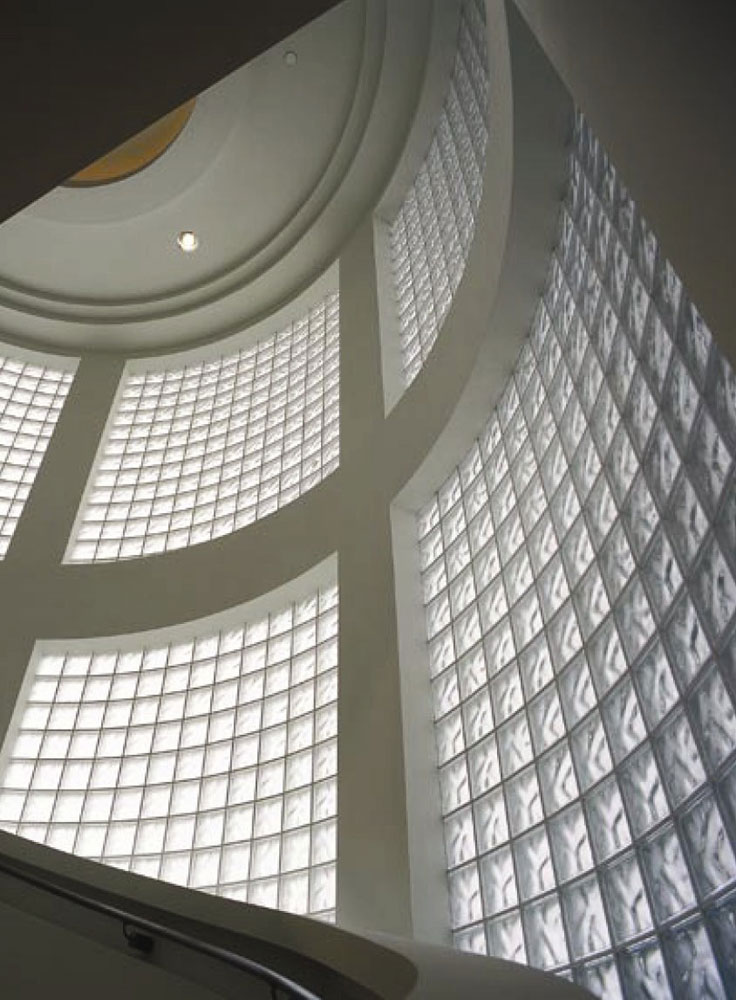Table of Content
A portion of the operational energy increase in tall buildings is related to the usage of elevators because the distance traveled and the speed at which they travel increases as the height of the building increases. Between 5 and 25% of the total energy consumed in a tall building is from the use of elevators. As the height of the building increases it is also more inefficient because of the presence of higher drag and friction losses. Constructing a single skyscraper requires large quantities of materials like steel, concrete, and glass, and these materials represent significant embodied energy. The tallest structure in ancient times was the 146 m Great Pyramid of Giza in ancient Egypt, built in the 26th century BC. It was not surpassed in height for thousands of years, the 160 m Lincoln Cathedral having exceeded it in 1311–1549, before its central spire collapsed.
Other pioneers of this field include Hal Iyengar, William LeMessurier, and Minoru Yamasaki, the architect of the World Trade Center. The Chicago press at the time of its construction did not refer to it as the first skyscraper in Chicago. An 1884 list of buildings considered skyscrapers in Chicago listed three buildings in the city whose final heights would be taller than the Home Insurance Building's, although the Home Insurance Building was completed in 1885, a year after the list. Iron framing of multistory buildings had originated in England in the late 18th century and was able to replace exterior load-bearing walls by 1844, but social movements and legal regulations hindered their use at that time.
window._cf_chl_opt=
Some early skyscrapers have a steel frame that enables the construction of load-bearing walls taller than of those made of reinforced concrete. However, if you’re doing updates that involve structural changes – such as altering the height, roof pitch, material sizes, material types, or how it ties into your home – then the situation changes. Significant structural changes alter the long-term integrity of the structure.
Her insurance expertise has been featured in Bloomberg News, Forbes Advisor, CNET, Fortune, Slate, Real Simple, Lifehacker, The Financial Gym, and the end-of-life planning service. The building weighed one-third as much as a masonry building and city officials were so concerned they halted construction while they investigated its safety. The building was designed in 1884 by Jenney for the Home Insurance Company. Now that you know if you need insurance while your home is under construction, you should be better equipped to purchase the best policy for you and your family.
Developing the Empire State Building
His central innovation in skyscraper design and construction was the concept of the "tube" structural system, including the "framed tube", "trussed tube", and "bundled tube". His "tube concept", using all the exterior wall perimeter structure of a building to simulate a thin-walled tube, revolutionized tall building design. These systems allow greater economic efficiency, and also allow skyscrapers to take on various shapes, no longer needing to be rectangular and box-shaped. The first building to employ the tube structure was the Chestnut De-Witt apartment building, considered to be a major development in modern architecture. These new designs opened an economic door for contractors, engineers, architects, and investors, providing vast amounts of real estate space on minimal plots of land. Over the next fifteen years, many towers were built by Fazlur Rahman Khan and the "Second Chicago School", including the hundred-storey John Hancock Center and the massive 442 m Willis Tower.

Most can be renewed if there are construction delays, says Saine, but the insurance company will usually assess the project to make sure progress is being made on the home. "We recommend that you get a copy of your builder's insurance to check for adequate coverage," says Saine. This type of policy is temporary, and covers you during construction, after which you'll need standard home insurance. Don't forget to ask your contractor about the insurance policy they carry and what their limits are. The more common gauge is the "highest architectural detail"; such ranking would have included Petronas Towers, built in 1996. Shanghai Tower, the tallest and largest LEED Platinum certified building in the world since 2015.
Tube structural systems
Craig Severance, was the world's tallest building for a month in May 1930. The Woolworth Building, a neo-Gothic "Cathedral of Commerce" overlooking New York City Hall, was designed by Cass Gilbert. At 792 feet , it became the world's tallest building upon its completion in 1913, an honor it retained until 1930. The Singer Building, an expansion to an existing structure in Lower Manhattan was the world's tallest building when completed in 1908.
The latter in turn was not surpassed until the 555-foot Washington Monument in 1884. However, being uninhabited, none of these structures actually comply with the modern definition of a skyscraper. A soil analysis allows a professional to examine soil samples to ensure your yard can support the weight of the structure. Generally, the requirements are outlined in local building codes, so research the relevant laws to see if you’ll need a soil analysis. How high a pergola can be without requiring planning permission varies by location.
This was the first skyscraper built in the city and set a precedent for other innovations in the construction industry, such as rapid elevators, wind bracing, and modern plumbing. Furthermore, at the time, it was a world record-breaking height, making it one of the world’s most recognizable structures. Review your home insurance policy with your agent to determine whether you have coverage for building code upgrades and if you should purchase additional coverage. You may especially need it if you live in an older home or live in an area where building codes have changed a lot, such as coastal and earthquake-prone areas. Most standard home insurance policies don’t cover the cost of bringing the house up to current codes if the structure didn’t meet the latest regulations before disaster struck. As a general rule, if your name is on ownership papers, you should be covered by a policy.

Homeowners insurance will only pay for code upgrades if you added on building code protection to your policy. It’s a problem that many East Coast homeowners faced in the wake of 2012’s Superstorm Sandy. Hundreds of residents in risky flood zones in Connecticut had to elevate their homes and/or rebuild them. Houses that needed to be rebuilt had to meet current sea level elevation requirements and all other building codes. Even when you’re renovating your house, you need to take the same precautions as if you were building a new house.
The main problem with double-deck elevators is that they cause everyone in the elevator to stop when only person on one level needs to get off at a given floor. German-American architect Ludwig Mies van der Rohe became one of the world's most renowned architects in the second half of the 20th century. He conceived the glass façade skyscraper and, along with Norwegian Fred Severud, designed the Seagram Building in 1958, a skyscraper that is often regarded as the pinnacle of modernist high-rise architecture. Some buyers may back out of the deal, and the value of your home typically drops.
The 442 m tall Sears Tower stood as the world's tallest building for 24 years, from 1974 until 1998, until it was edged out by 452 m Petronas Twin Towers in Kuala Lumpur, which held the title for six years. —Louis Sullivan's The Tall Office Building Artistically Considered Some structural engineers define a highrise as any vertical construction for which wind is a more significant load factor than earthquake or weight. Note that this criterion fits not only high-rises but some other tall structures, such as towers. The process involves submitting an application to your local building department. Then, a building office official reviews the document and conducts an inspection to see if your structure meets the code.
Loss or damage caused by or related to demolition, alteration, construction, cleaning, renovation, repair, restoration or similar process. Impact to structures by vehicles, aircraft or aerial devices or falling objects. Choose a plan for yourself, family or build your own cover to suit your needs. Loan up to 100% of the property value or up to 105% if you are a first-time buyer. Make a list of your inventory - Make an inventory of all your equipment, tools, and other things that are stored, being used, or in-transit so that you can include everything in the policy. Normally, this coverage is written in periods of three months, six months, or a year.

Adding building code coverage to your policy will come at an additional cost. As the contractor may or may not carry appropriate coverage, the damage to the structure becomes the owner’s responsibility. If you’re the owner of the land on which the property is being constructed, then you should ideally buy coverage for protection, especially if you’re building a house from scratch. Not only will it depend on what your builder covers and what you’re responsible for, but also on how long the home is under construction and the size and building materials.
Why do I need builder’s risk insurance?
The skylines of many important medieval cities had large numbers of high-rise urban towers, built by the wealthy for defense and status. The residential Towers of 12th century Bologna numbered between 80 and 100 at a time, the tallest of which is the 97.2 m high Asinelli Tower. A Florentine law of 1251 decreed that all urban buildings be immediately reduced to less than 26 m. Even medium-sized towns of the era are known to have proliferations of towers, such as the 72 up to 51 m height in San Gimignano. The rules can change when you attach a pergola to a structure, foundation, or footers.

No comments:
Post a Comment